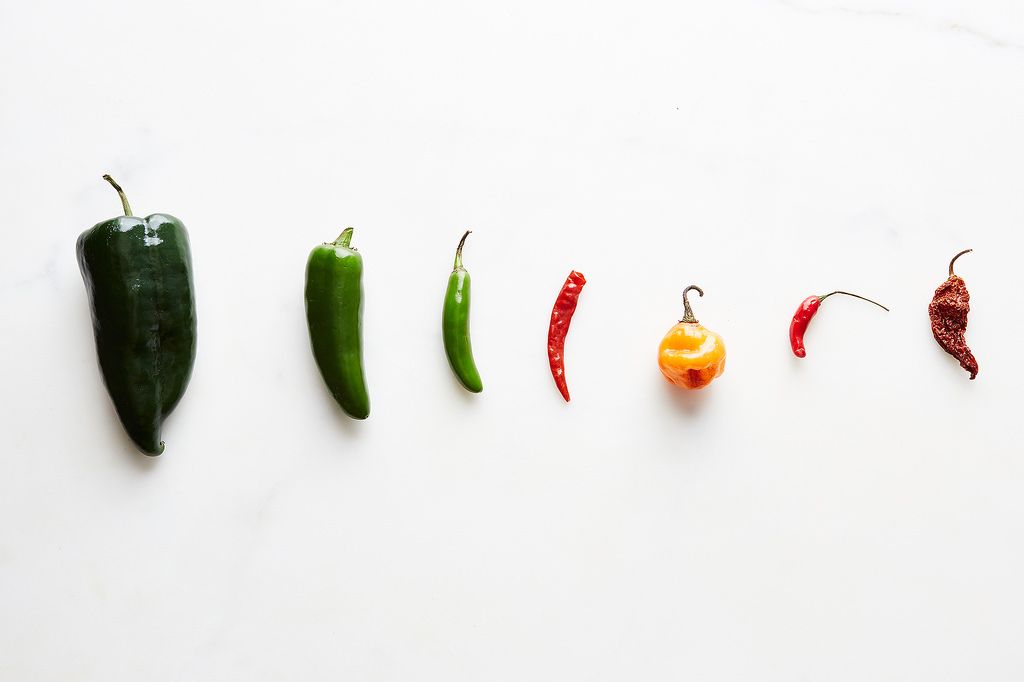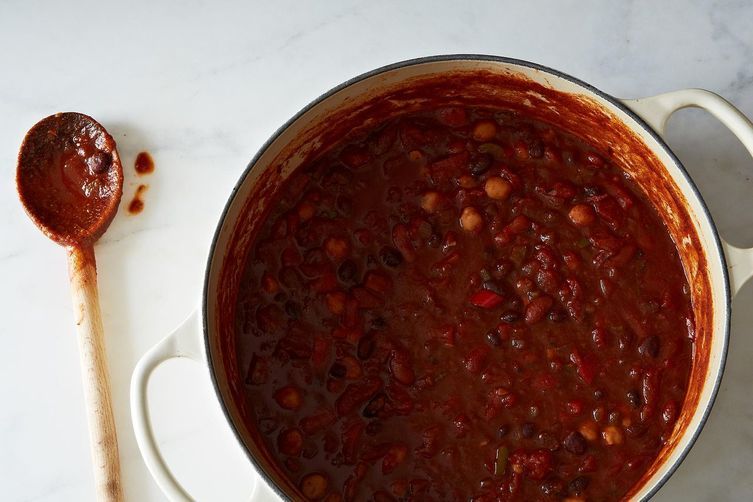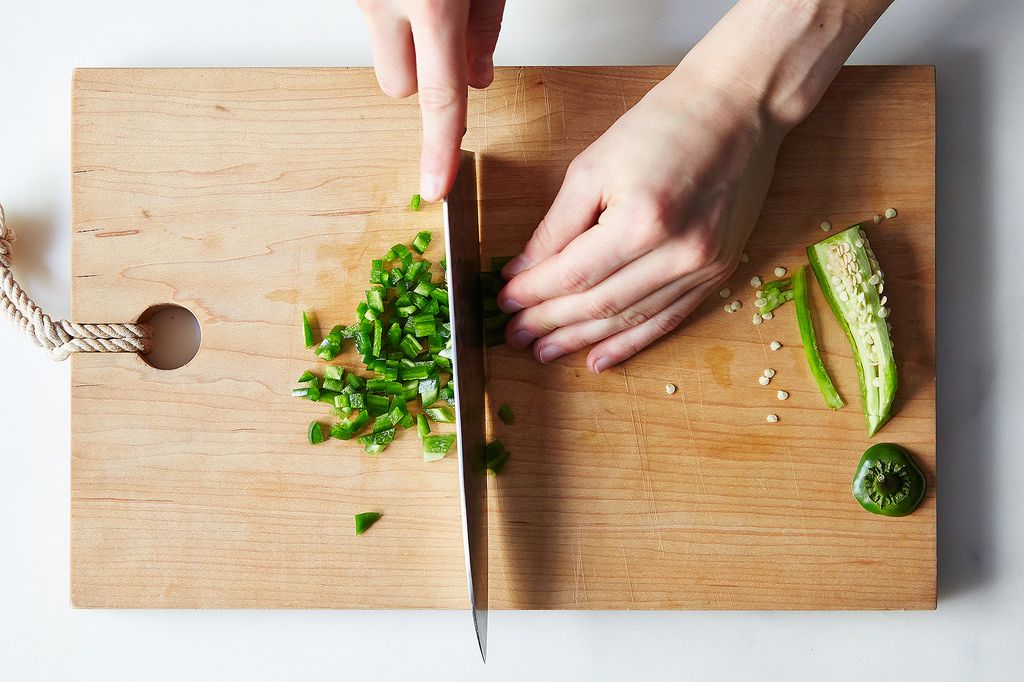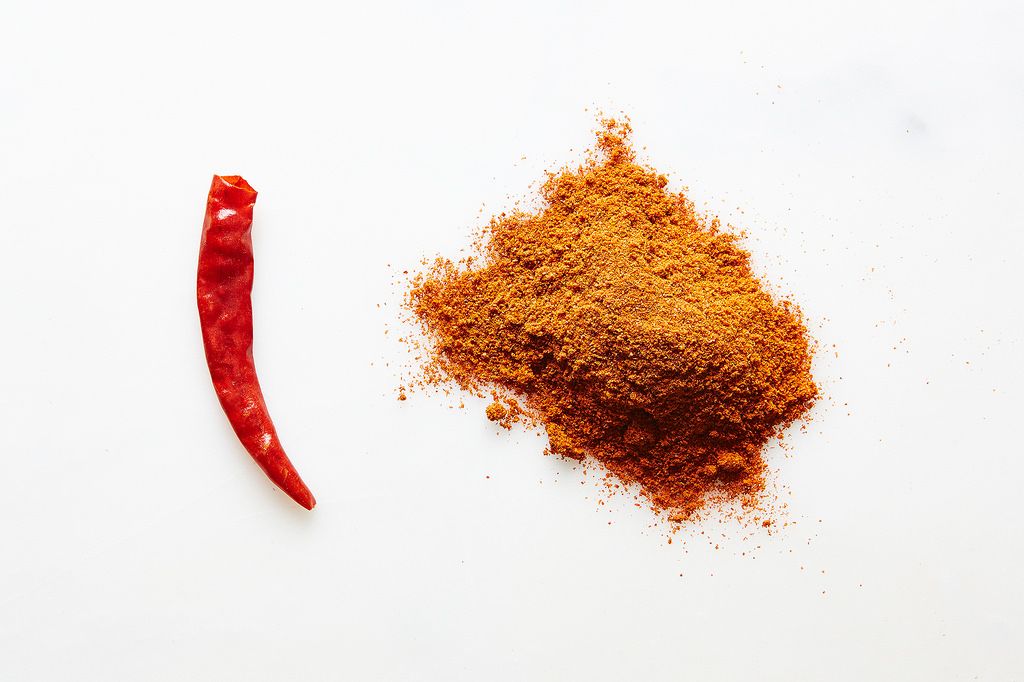Popular on Food52
Continue After Advertisement
19 Comments
Smaug
July 31, 2018
There is a good deal in this that is questionable, in particular the semantics. There is virtually no commonality of usage of the terms "chile", "chili", "chilli" etc.- while there are some local tendenciesl, there is no consistent usage among the users of these terms and, as in all semantic questions, no one with any real authority to decide how they should be used.. Additionally, some (like this author) use the term only for peppers with some degree of heat, some for any peppers at all, some only for peppers of Mexican origin and their relatives etc. Ancho chiles are dried Poblanos, but they are inevitably dried RIPE Poblanos, which are almost never seen for sale fresh- I have no clear notion what those should be called. Chile Mulatto is also a dried Poblano, and all of these are, for unknown reasons, referred to in much of the Western US and some of northern Mexico as Pasilla peppers, while true Pasillas are a completely different pepper, rarely sold fresh and when dried referred to as Chile Negro. Add to this the prevalence of field hybrids and genetic variability among the species, and the terminology is a tangle that will probably never be resolved.
LD M.
March 29, 2016
When referring to the pepper or the soup it's pronounced chilli (chilly, like cool weather) the country has two syllables and it's pronounced Chi'le (chee-lay), dang it, there I go splittin' hairs again! Oh well, Hasta La Bye Bye! I just corrected you on pronunciation, now look at my Spanish, I'm such a hypocrite!
Patryk O.
February 27, 2016
amazing article ! i share it with my friends ;p
What do you think about this article he wrote about 15 hottest peppers
http://browse-read.com/the-15-hottest-pepper-in-the-world-other/
What do you think about this article he wrote about 15 hottest peppers
http://browse-read.com/the-15-hottest-pepper-in-the-world-other/
david J.
May 8, 2015
I make a past from dried chiles . I use ancho negros and santa fe . this is not so hot but flavorful. my favorite thing to do with them is fry some rice then when it is clear add a couple table spoons of the paste and hot liquid . Liquid= stock water tomatoes what ever is appropriate.
Hector L.
April 29, 2015
Besides heat, Habaneros give a delicious fresh orange-like taste to food. To enjoy it with only a pleasant warming amount of heat, drop them whole into sauces, soups, beans, stews, etc. Fish them ALL out before serving, unless you really want to see someone's head explode. Dried, they work as well as fresh and are easily flaked or powdered. I dry mine spread on a Chinese steamer basket set over an AC/Heat vent.
Mike M.
April 29, 2015
My father was a gardener and he had a deal with his friend from Barbados where Dad would supply him with Scotch Bonnet peppers and he would make Bajan sauce. It was fantastic! He wouldn't share the recipe since his son bottled and sold the sauce out of Dallas but it I know it had mustard, vinegar, and horseradish in the mix. Has anyone run across a recipe like this? Both Dad and this buddy are no longer with us.
Valarie C.
April 29, 2015
I use ghost peppers in a lot of my everyday cookery. As long as you are balanced about how much you put in, they have a wonderful flavor and really get the endorphins flowing!
The P.
April 29, 2015
I like to make Caribbean "crushed pepper" (Scotch Bonnet) sauce. Helpful if you open all the windows in your residence prior to making this! I'd also recommend wearing gloves.
Take a bunch of fresh or thawed frozen Habs or Bonnet peppers and remove the stems and slice them lengthwise. Do not discard the seeds or inner ribs. Placed sliced chiles in a saucepan with some cheap white distilled vinegar and briefly simmer them until the chiles become soft. Use a slotted spoon to transfer the chiles to a blender or food processor and add a bit of the vinegar. Pulse the chiles until a desired consistency is reached and add more of the vinegar if it's too thick. Funnel the sauce into clean or dishwashwer-sterilized bottles. Add salt to your choosing (a ketchup bottle would use about a TBS). You may add food color of your liking if needed. A sauce made from red chiles will make a neon-orange sauce without any need of additional coloring. If desired you can also add a bit of citric acid. Fill the bottles near full and cap them. I've never refrigerated this stuff as the concentration of capsaicin, salt, and acid likely will prevent spoilage for the next 100 years. This stuff is liquid dynamite.
Take a bunch of fresh or thawed frozen Habs or Bonnet peppers and remove the stems and slice them lengthwise. Do not discard the seeds or inner ribs. Placed sliced chiles in a saucepan with some cheap white distilled vinegar and briefly simmer them until the chiles become soft. Use a slotted spoon to transfer the chiles to a blender or food processor and add a bit of the vinegar. Pulse the chiles until a desired consistency is reached and add more of the vinegar if it's too thick. Funnel the sauce into clean or dishwashwer-sterilized bottles. Add salt to your choosing (a ketchup bottle would use about a TBS). You may add food color of your liking if needed. A sauce made from red chiles will make a neon-orange sauce without any need of additional coloring. If desired you can also add a bit of citric acid. Fill the bottles near full and cap them. I've never refrigerated this stuff as the concentration of capsaicin, salt, and acid likely will prevent spoilage for the next 100 years. This stuff is liquid dynamite.
Pauletta S.
April 29, 2015
Live in Chicago suburbs, but in traveling to California every year, by car, we stop at every market along the way. We search Illinois, Wisconsin, Oklahoma, Arizona, etc.
Pauletta S.
April 29, 2015
Do you know where to buy fresh cayenne or arable chiles? The only ones available are the dried (usually packaged) ones.
freesumpin
April 29, 2015
Depends - In what part of the world do you reside? It's a big place here, ya know?
garlic A.
April 29, 2015
Cooking with heat - nice! My grandfather would keep habanero peppers to "flavor" his caribbean dishes. He would cut them in half, hold them by the stem and dab all over his fish and vegetables. Love that!
michele
March 2, 2015
I love cooking with chiles especially in Asian dishes, but I serve these to my kids too, and I can never tell if I have made it right when I reduce the chile presence. I don't want to skip on flavor but I also want my family to enjoy as well. Any ideas?
Leslie S.
March 2, 2015
I would maybe serve the dishes with the same amount of chile either substituting a spicy chile for a milder one, or using our advice for removing the majority of the spice, "If you aren't a huge fan of spice, there are several ways to prepare your chiles to cut down on the heat. The majority of the spice, or capsaicin, is contained in the spongy white mass directly under the stem that holds the seeds. To reduce the spice, remove this part of the chile, along with the seeds, using a spoon or paring knife."
Andrew M.
February 27, 2015
Americans: chilli is the fruit, Chile is the country.
I'll let you use one L if you must, but no Es, damnit!
I'll let you use one L if you must, but no Es, damnit!
Leslie S.
February 27, 2015
Thank you for your note, but any member of the Capsicum genus is called a chile (one L, just like the country!). When multiple variations of chiles are combined, they form chili, in pepper or paste form. In British English, chiles are sometimes referred to as chillis -- this might be what you're referring to?
Sunita J.
February 25, 2015
Love red chili garlic chutney I teach in my Indian Tapas class. Goes a long way with a variety of Indian street foods like Vada Pav, Bhel, Pav Bhaji and more...Great on sandwiches too...





See what other Food52 readers are saying.